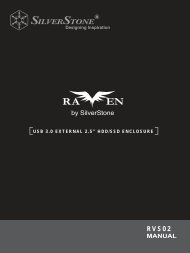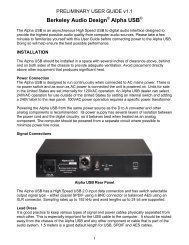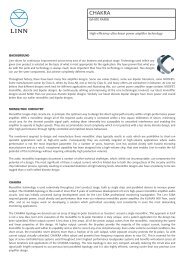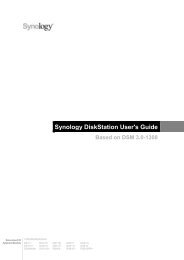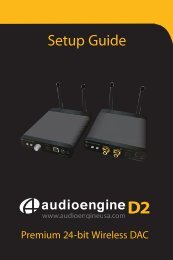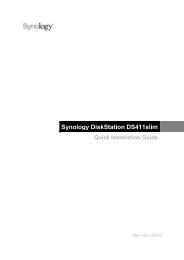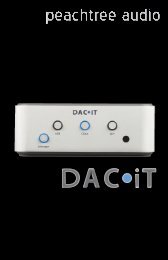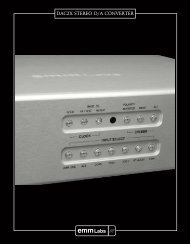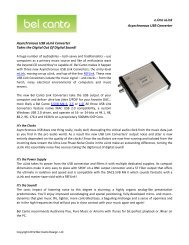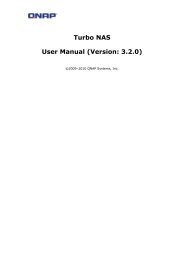Create successful ePaper yourself
Turn your PDF publications into a flip-book with our unique Google optimized e-Paper software.
RAID InformationItemDescriptionMaster RAIDThe RAID volume currently designated as the Master RAIDvolume.IDID of the current RAID volume.NOTE: All RAID IDs must be unique.RAID LevelShows the current RAID configuration.StatusIndicates status of the RAID. Can read either Healthy,Degraded, or Damaged.Disks UsedHard disks used to form the current RAID volume.Total CapacityTotal capacity of the current RAID.Data CapacityIndicates the used capacity and total capacity used by user data.USB CapacityTotal capacity of the target USB Device.iSCSI CapacityIndicates the capacity allocated to iSCSI.Create a RAIDOn the RAID Information screen, press the create button to go to the CREATRAID screen. In addition to RAID disk information and status, this screen lets youmake RAID configuration settings.Using Create RAID, you can select stripe size, choose which disks are RAID disks orthe Spare Disk. .RAID ConfigurationsItemDescriptionDisk No.Number assigned to the installed hard disks.Capacity (MB)Capacity of the installed hard disks.ModelModel number of the installed hard disks.StatusStatus of the installed hard disks.UsedIf this is checked, current hard disk is a part of a RAID volume.SpareIf this is checked, current hard disk is designated as a spare for aRAID volume.Master RAIDCheck a box to designate this as the Master RAID volume. See theNOTE below for more information.Stripe SizeThis sets the stripe size to maximize performance of sequentialfiles in a storage volume. Keep the 64K setting unless you requirea special file storage layout in the storage volume. A larger stripesize is better for large files.Data Percentage The percentage of the RAID volume that will be used to store data.CreatePress this button to configure a file system and create the RAIDstorage volume.To create a RAID volume, follow the steps below:1. On the RAID Information screen, click create.2. On the RAID Configuration screen, set the RAID storage space as JBOD,RAID 0, RAID 1, RAID 5, RAID 6, or RAID 10 — see Appendix C: RAIDBasics for a detailed description of each.3. Specify a RAID ID.4. If this RAID volume is meant to be the Master RAID volume, tick the MasterRAID checkbox.51



